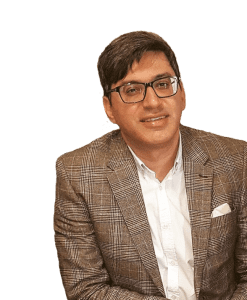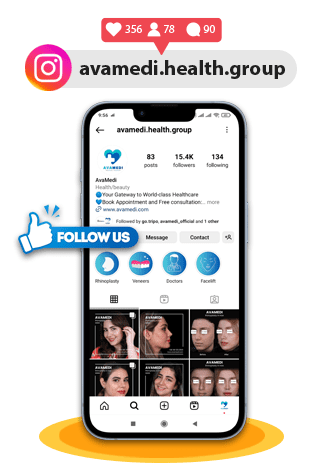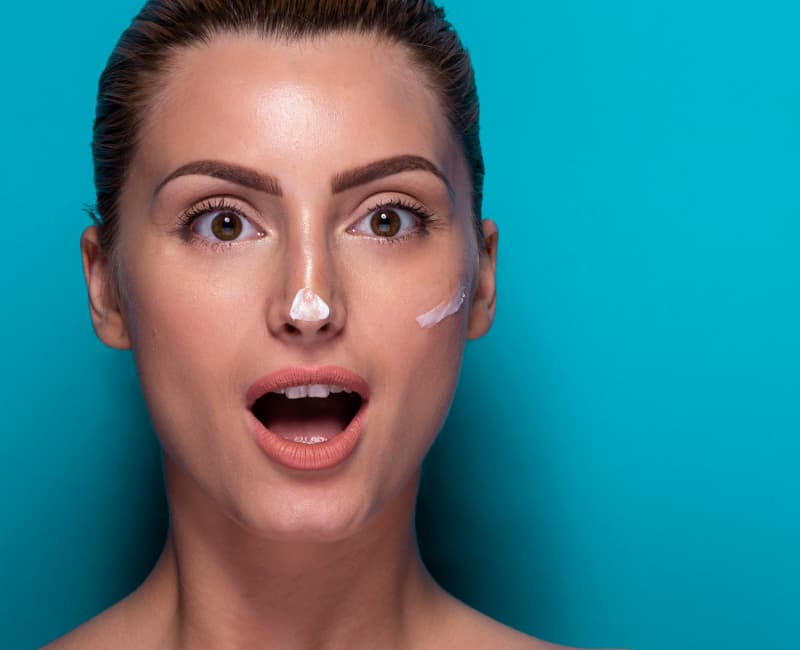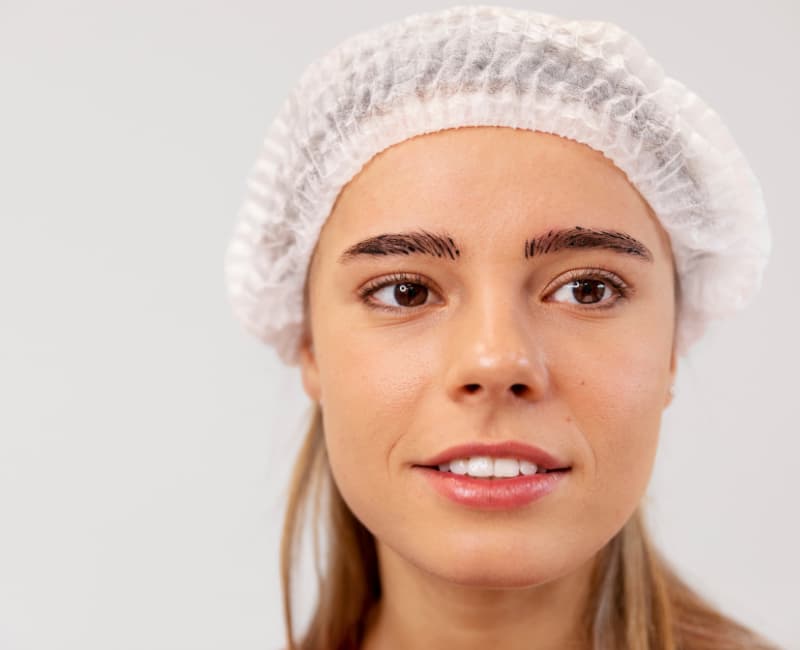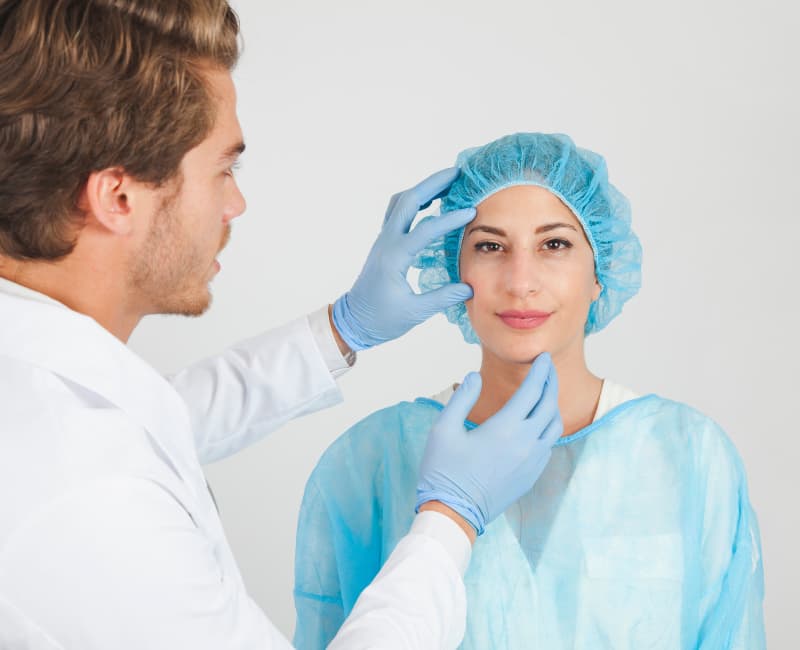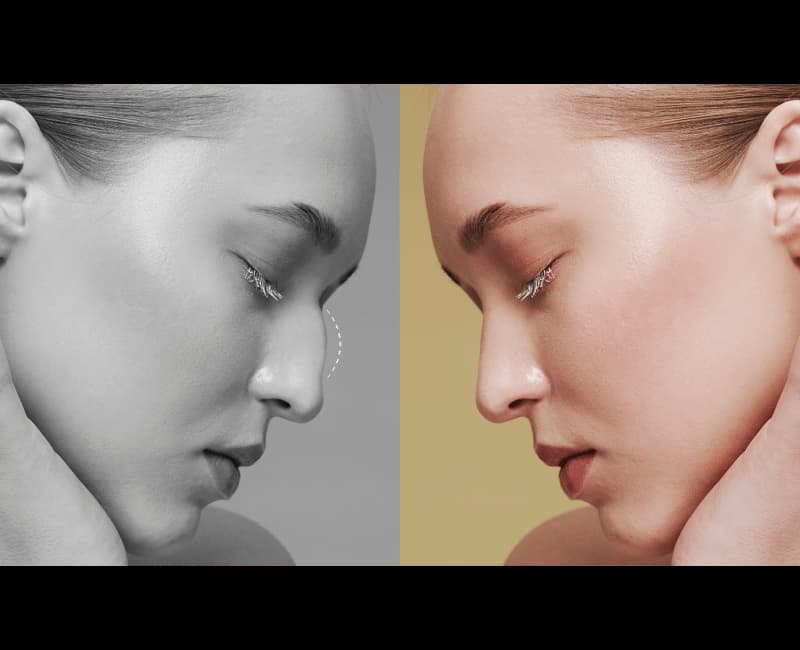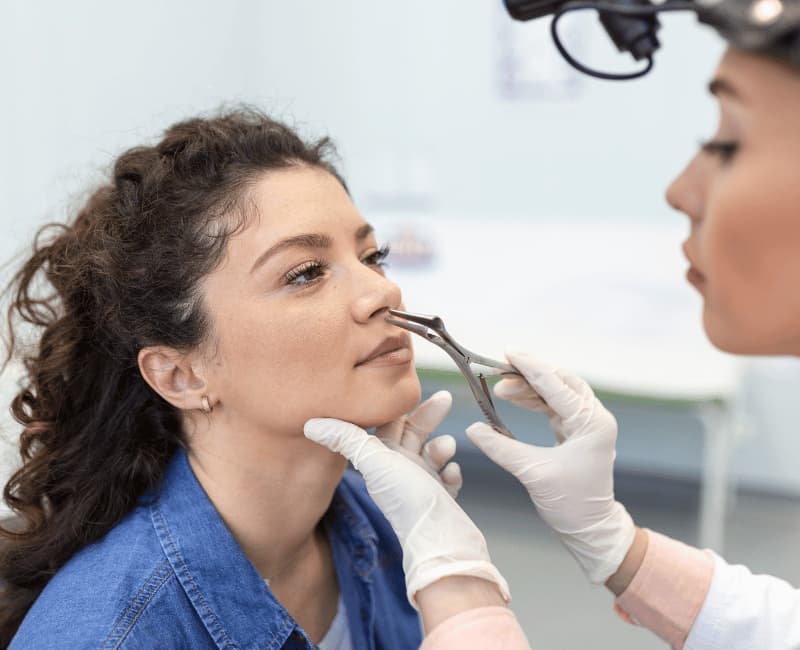Useful Tips about Nose Tip Surgery Recovery
Many individuals view rhinoplasty surgery as an effective method to bring facial features into harmony and achieve better proportionality with the rest of the face. It has the potential to significantly impact both appearance and confidence, providing a natural look. However, it’s important to note that the average nose tip surgery recovery time is one year.
Avamedi offers multiple other services such as Rhinoplasty in Iran.
How Can We Enhance the Nose Tip Surgery Recovery Process?
Before undergoing this surgical procedure, it’s crucial to understand the postoperative care required for a successful, painless, and expeditious healing experience. During your pre-operative visit, specific advice regarding post-surgery recovery will be provided. In the meantime, here are 11 recommendations we suggest for everyone considering nose surgery.
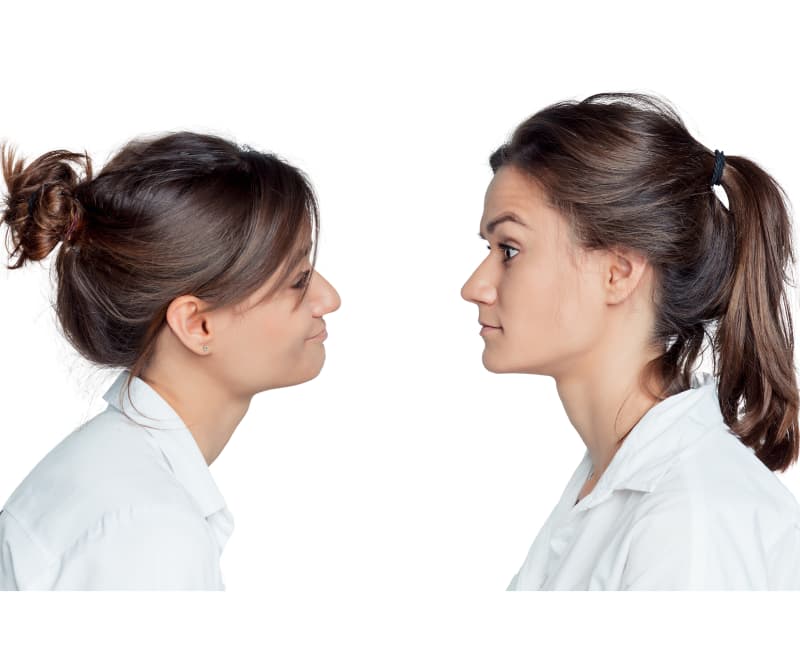
Tips to Improve Your Nose Tip Surgery Recovery
-
Manage Swelling:
Following rhinoplasty, employing a plastic bag filled with ice or an inflatable pillow to maintain open nasal passages can be beneficial in alleviating swelling and pain. This practice is recommended for the initial days of nose tip surgery recovery, as it helps restrict blood circulation to the affected area, thereby reducing inflammation and expediting the recovery process.
-
Refrain from using anti-inflammatory medication during the healing process:
These medications can potentially heighten nasal swelling and blood circulation, leading to bruising or delayed healing. We advise consulting with your doctor before considering the use of anti-inflammatories during the recovery period.
-
Have Plenty of Rest:
Postoperative pain may interfere with your ability to sleep deeply, but adequate rest is a crucial element of the healing journey. Providing your body with sufficient time to rest is vital as it aids in the recovery of strength. Sleep plays a key role in the repair of damaged tissue, and inadequate sleep can impede these essential repair processes.
Click (Guide to Bulbous Nose Tip Surgery Recovery) to read the article.
-
No Smoking:
It is advisable to refrain from smoking for a minimum of four months or until receiving medical clearance to resume. The presence of nicotine in the body from smoking can constrict blood vessels and impede the delivery of essential nutrients to the wound, potentially hindering the healing process. Moreover, smoking poses a substantial risk of complications, further contributing to delays in the overall healing process.
-
During your nose tip surgery recovery, you should go for a walk:
Engaging in walks helps gently enhance blood flow throughout your entire system, promoting fluid circulation and preventing any buildup within your nose. Furthermore, the increased breathing and slightly elevated heart rate during walks contribute to improved air intake, reducing stress levels and preventing congestion in your sinuses.
-
Maintain a Healthy Diet:
Why is munching on your veggies crucial for nose tip surgery recovery? A great deal! Maintaining a well-balanced diet post-nose surgery accelerates the healing process by providing your body with the essential nutrients it requires for a speedy recovery.
Protein, one of the three key nutrients (alongside carbohydrates and fats), plays a vital role in our body’s functioning. Nuts, meats, dairy products, eggs, beans, and other protein-rich foods supply us with these essential nutrients, aiding in the repair of nasal damage caused by injury or surgery.
Ensuring an adequate intake of vitamin A and vitamin C is also essential. Vitamin A, known as retinol, is crucial for maintaining healthy vision, especially night vision. It enhances immunity and combats infections. Vitamin C, or ascorbic acid, is essential for bone health and facilitates wound healing, while also providing a boost to energy levels. Foods rich in vitamin C include oranges, strawberries, tomatoes, peppers, and bell peppers.
-
Avoid Blowing Your Nose:
Following nose job surgery, you may experience congestion for several weeks, possibly extending to a month or two, due to swollen nasal tissue. Refrain from attempting to blow your nose during this period. If you encounter difficulty breathing through your nostrils, promptly contact your facial plastic surgeon. They might recommend a saline nasal rinse to maintain sinus moisture until healing occurs. Normal breathing should resume within approximately six weeks.
As for sneezing, instead of attempting to completely avoid it, redirect the action by expelling air through your mouth rather than your nasal passages. While it may seem unpleasant, it’s a preferable alternative to potentially harming delicate nostrils and impeding the healing process.
-
Avoid Using Spicy Foods:
In the initial days of nose tip surgery recovery time, any irritation in your nose or nasal passage can potentially result in postoperative bleeding, infection, or swelling. Hence, it is strongly advised to refrain from consuming spicy and salty foods during this period. Spices like chili powder can irritate the sinuses, leading to the dilation of blood vessels, thereby increasing early-stage swelling and bruising. By avoiding spicy foods, you can prevent unnecessary swelling or irritation in your nose, potentially avoiding an extended nose tip surgery recovery time.
-
Sun Exposure Affects Your Nose Tip Surgery Recovery:
Throughout your nose tip surgery recovery, it is advisable to exercise additional caution to limit exposure to excessive sunlight. The surgical alterations make your nose more prone to sunburn, and an abundance of sunlight has the potential to exacerbate any existing bruising or swelling.
-
Avoid wearing glasses During Nose Tip Surgery Recovery:
Given the repositioning of nasal bones, a common aspect of about 90% of nose tip surgery procedures, it is recommended to refrain from wearing glasses for approximately five weeks during the nose tip surgery recovery time. Rhinoplasty patients are advised to suspend glasses with small pieces of transparent tape, ensuring they are visibly positioned just above the bridge to avoid any pressure. Those who use contact lenses can typically resume wearing them the day after the surgery.
-
Nose Tip Surgery Recovery Recovery Post-Op Appointments are Important:
You will receive instructions on when to attend your next appointment, which may occur within just one or two days following the surgery.
It is crucial to attend all scheduled follow-up visits, and there are compelling reasons for doing so. Firstly, your facial plastic surgeon may need to remove packing materials or stitching from your nose, with this requirement varying depending on the type of surgery performed and individual patient circumstances. Furthermore, these appointments allow your surgeon to monitor for potential signs of swelling and ensure that your healing process aligns with expectations.
Nasal Tip Surgery Recovery Time
In contrast to the comprehensive rhinoplasty surgery, tip plasty stands out as a simpler and quicker procedure with remarkably shorter recovery times. The additional work involved in a full rhinoplasty, particularly on the nasal bones and cartilage in the bridge area, tends to result in increased swelling, bleeding, and bruising, thereby leading to a more extended period of discomfort and recovery compared to the relatively streamlined and the nasal tip surgery recovery time is shorter.
How Long Does It Typically Take Nose Tip Surgery Recovery?
The duration of nose tip surgery recovery varies based on the specific type of procedure needed to enhance the appearance of your nose, your individual healing process, and your commitment to aftercare.
Typically, nose job recovery spans up to a year, with most rhinoplasty patients achieving complete healing within four to six months.
Nose Tip Surgery Recovery; Week by Week
Week 1: Following the surgery, you will return home on the same day. Bandages on your face and a supporting splint on your nose will be in place, with the splint often taped to your cheek or forehead. Gauze may also be taped under the nose to address any bloody discharge from the nostrils.
Expect soreness and pain during the initial week of recovery, accompanied by swelling and bruising around the nose and under the eyes. Elevating your head while resting is recommended to minimize swelling and discomfort.
Taking time off from work and refraining from strenuous activities during the first week, at a minimum, is advised for a successful nose job recovery. Adequate rest in the initial days is crucial for the recovery process.
Week 2: In the second week of nose tip surgery recovery, most patients will have their splint and bandages removed during a follow-up visit with their plastic surgeon. Some degree of bruising and swelling may still persist during this phase.
The decision of whether to resume work or venture out in public after the initial week is a personal one, depending on your comfort with your appearance. Regardless of your choice, it is advisable to continue avoiding strenuous activities and heavy lifting. If your job involves such activities, taking additional time off may be a prudent consideration.
Month 1: By the end of the first two weeks, the majority of swelling and bruising should have diminished, and discomfort stemming from the surgery and healing process is typically reduced for most patients within a month. At this point, you should start observing many of the expected results from the rhinoplasty. Although some residual swelling of the nose may persist, it may only be perceptible to you and your close family.
Months 2-3: In the second and third month of nose tip surgery recovery, your facial appearance will gradually return to its familiar state, albeit with enhancements to the nose in terms of shape, size, and/or contour. It’s important to note that the tip of your nose is particularly prone to swelling, and subtle signs of swelling in this area may persist for up to a year.
Months 6-12: In certain cases, it may take up to a year for the minor swelling at the tip of the nose to completely dissipate, particularly for individuals with thicker skin on their nose. Once the swelling subsides, the final results of the rhinoplasty will become apparent.
Bulbous Nose Tip Surgery Recovery
Recovery from bulbous tip nose surgery is a straightforward process that allows patients to resume their daily routines with minimal disruption. While some mild discomfort and swelling may be experienced in the days and weeks following the procedure, these can be effectively managed using over-the-counter pain medications and cold compresses.
In the initial stages post-surgery, patients may notice some bruising and swelling around the nose, which typically subsides within a few days. It’s common to experience numbness around the nose during this period, but this is temporary and usually resolves within a few weeks.
Wearing glasses or sunglasses on the nose should be avoided for at least two weeks, and after this period, patients can gradually resume their normal activities. However, activities involving direct contact with the nose should be approached with caution until clearance from the surgeon is obtained.
Conclusion
Temporary, non-surgical rhinoplasty options with minimal to no recovery time are available. However, for surgical rhinoplasty, like nose tip surgery recovery is inevitable. The duration of the nose job recovery and associated limitations depends on the individual’s healing speed and the complexity of the procedure.
More intricate surgeries, such as rhinoplasty for a crooked nose or wide nose rhinoplasty, tend to entail longer recovery times, as surgeons need to make more substantial adjustments to the bone, cartilage, and skin of the nose.
The healing process may be delayed for older individuals with one or more medical conditions. In general, younger patients tend to experience faster healing, unless hindered by health or lifestyle factors. Consistent consumption of caffeine, alcohol, and tobacco can also impede the recovery process after a nose job.
The healing process may be delayed for older individuals with one or more medical conditions. In general, younger patients tend to experience faster healing, unless hindered by health or lifestyle factors. Consistent consumption of caffeine, alcohol, and tobacco can also impede the recovery process after a nose job.
source: plasticsurgery










